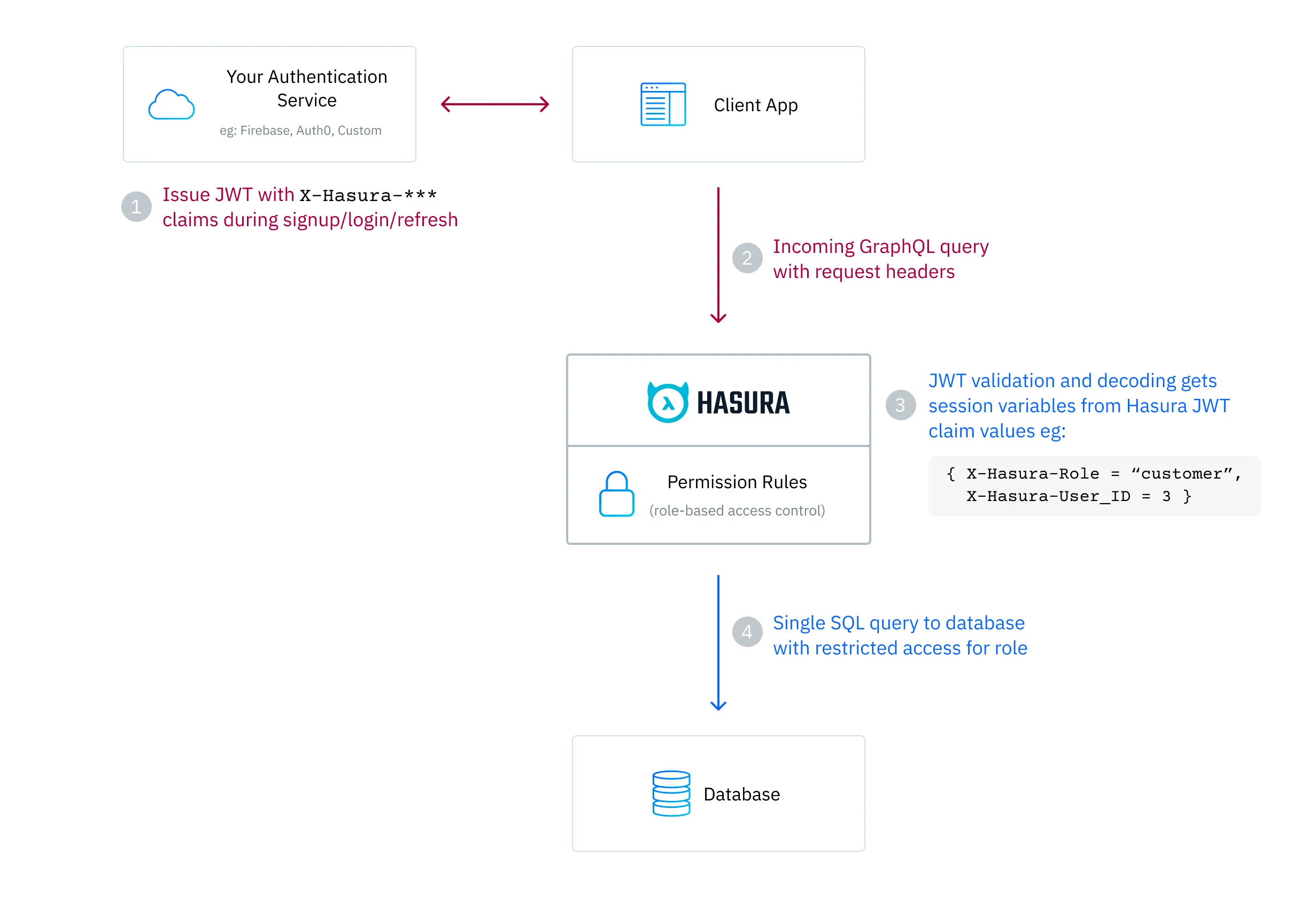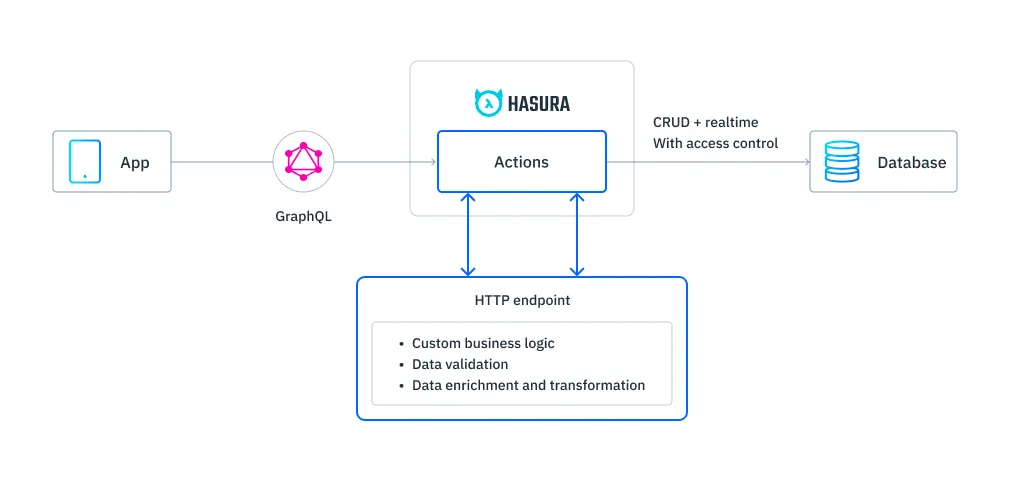Hasura Auth Service
It is a GoLang application which can work with Hasura to provide proper JWT based authentication. It uses PostgreSQL as database and Hasura GraphQL Engine for GraphQL API. It also uses Docker for easy deployment.

Motivation
Hasura GraphQL Engine is a great tool to prototype your idea really fast without worrying about the backend. You can easily create a GraphQL API with Hasura and start building your frontend.
But it doesn’t have proper authentication system in place, it relies on external auth service. Which is a good thing, because you can use any auth service you want. But it also means you have to setup an auth service yourself.
I wanted to use Hasura for my side projects, but I didn’t want to setup an auth service everytime. So I created this simple JWT auth service for Hasura GraphQL Engine using GoLang.
How it works
In simple terms, Hasura requires a JWT token with X-Hasura-User_Id and X-Hasura-Role claims in it. It will use
these claims to authorize the user. as shown in the following diagram.

All we have to do is, create a JWT token with the required claims and send it to the client. To achieve this, we need to create an auth service which can do the following things.
- Register a new user
- Login a user and generate JWT token with required claims
- Refresh the JWT token
Even though it is a straightforward process, and we can easily create a standalone auth service. But there is a prettier solution. As we are using Hasura, we can use Hasura Actions to create a custom GraphQL API. That will contact our auth service and do the required things. And the client won’t have to worry about the auth service, it will just use the Hasura GraphQL API.

With all this in mind, I created a GoLang application using Mux router. It has 3 endpoints.
/register- To register a new user/login- To login a user and generate JWT token/refresh- To refresh the JWT token
This application is served as a Hasura Action. So we can use it as a GraphQL API. The application still needs to be deployed somewhere. So I used docker to create a container image and deployed it along with Hasura.
Conclusion
This was a fun little project to work on. I learned a lot about Hasura Actions, GoLang and authentication methods. How JWT works in general and what are the best practices to follow while using JWT.